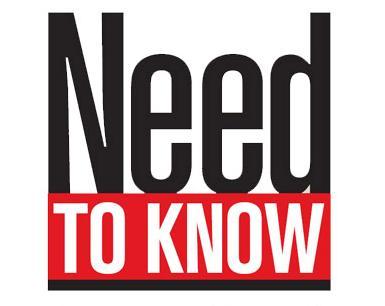Essentials: The “Need-to-Knows” About the New Individual Health Insurance Marketplace
 With the on-set of healthcare reform, the landscape in the individual health insurance marketplace has changed dramatically. In this article, we’ll describe what you need to know in order to navigate the new individual segment of the health insurance industry.
With the on-set of healthcare reform, the landscape in the individual health insurance marketplace has changed dramatically. In this article, we’ll describe what you need to know in order to navigate the new individual segment of the health insurance industry.
Before we get to the good stuff, let’s review a very short background about the differences between individual health insurance and group health insurance. Briefly: if you know anything about the health insurance industry at all, you’ll know that these are two completely different ballgames when it comes to plan design. There are different rules. There are different tax incentives. There are different eligibility criteria. The list goes on. That’s a whole different article.
As an individual or business owner, you’ll want to know the ins-and-outs of both the individual and group health insurance marketplaces… but let’s emphasize that we’re looking at the individual segment only in this article. For certain small business owners, that’ll be most important anyways.
Here are the “essentials” of the new individual health insurance marketplace. This is what you need to know:
Guaranteed Issue Mandate
This is probably the biggest “game-changer” of them all. For years-upon-years, if you were going to apply for an individual health insurance plan, you had to go through a series of health-related questions in order to apply for coverage. There were 50, 60, and sometimes 70 or more questions. If you’ve applied for individual health insurance coverage before 2014, you know what this all about.
Starting in 2014, these health-related questions are all gone. You heard that right: outta’ here. It’s still difficult for many to comprehend. There are no more health-related questions on individual health insurance applications anymore. This is what is called “guaranteed issue” in the insurance world (big insurance word). All “guaranteed issue” means, is that if you apply for coverage, you have got to be accepted.
Q: How does this change the ballgame? A: You don’t need to have access to a group health insurance plan (employer plan) anymore to apply for coverage. This is huge (especially for those with preexisting conditions).
It can’t be emphasized enough how much this has freed-up individual choice in health insurance plans. You can literally pick any individual insurance plan from any company, and apply for coverage now. And it gets better for some of you: if you’re eligible for subsides at the new health insurance marketplaces (exchanges), you could see some massive subsidies that will help you pay for your premiums.
This all sounds fine and dandy, right? It is. But there are some important rules that need to be understood, and that leads us into our next important topics.
Open Enrollment Periods
In the past (before 2014), you could apply for an individual health insurance plan at anytime during the year. You could go out, you could pick a plan, you could apply for coverage. But… you might be denied coverage because of a preexisting condition (which you now know is against the law). So these days (2014 and beyond)… there’s now an “individual plan open enrollment period.”
Q: What’s an open enrollment period? A: It’s a time-frame when you can apply for health insurance coverage. If you’ve ever worked for an employer that has a company health insurance plan, you’ll know that you’ve usually got to apply for coverage (and make changes) during yearly enrollment. This is that exact same concept in the new individual health insurance marketplace. Except it’s a BIG enrollment: it’s the entire United States.
So, that being said, you’ve now got to apply during individual insurance open enrollment each year. This can be very important, because if you miss this enrollment period, you don’t get an opportunity to apply until the next Fall (unless you qualify for “special enrollment”… which we’ll cover soon). Need an appendectomy in the middle of the year? It’s too late.
The moral of the story: you want to make sure you know exactly when you can enroll in an individual health insurance plan: that’s during open enrollment each year. It’s a much different concept. And it’s important to note that open enrollment dates are the same for individual health insurance plans both on and off the new exchanges.
Special Enrollment Period
Now that you know what open enrollment is all about, the next thing that needs to be looked at is what is called a “special enrollment period.” A “special enrollment” is a time to enroll in the middle of the year (outside of the regular open enrollment described above), under specific circumstances.
Q: What are these “special enrollment” circumstances? A: They’re described as “life events” that can take place throughout the middle of the year. If you incur one of these “life events,” you’ll then be eligible to enroll in an individual health insurance plan outside of the regular open enrollment period. This is called a special enrollment.
Here are some examples of these “life events”:
- You get married.
- You get divorced.
- You have a child.
- You lose your coverage (changing jobs, etc).
- You move out of the state where you currently get your health insurance.
- You become a legal citizen or national.
- … plus others.
You’ll want to make sure that you understand these qualifying “life events” if you ever need to utilize the “special enrollment period.” Additionally important: most events give you 60 days to enroll in a new plan from the time the “life event” takes place. However, a few of these events only give you 30 days. Make sure you know which event applies to you, and how much time you have.
Now that we know all about guaranteed issue, open enrollment, and special open enrollment… we want to take a brief last look at a few of the basic important concepts of the new individual health insurance marketplace. They are:
- Shared Responsibility
- Minimum Essential Coverage
- Essential Health Benefits
Shared Responsibility
“Shared responsibility” is a technical term that has been coined in the healthcare reform law. All it means is that everybody has got to be “in” in order to make these new reforms work: the federal government, state governments, employers, and individuals. The “shared responsibility” provision applies to most individuals (there are a few exceptions) of all ages, including children. Almost everybody has got to have a health insurance plan from somewhere.
Minimum Essential Coverage
“Minimum essential coverage” is the type of coverage that you have got to have in place in order to satisfy the requirements of the Affordable Care Act (healthcare reform). In other words, there is a standard of coverage that has to be met in order to meet responsibilities required under the Act. If you don’t want to pay the tax penalties, you’ve got to have this “minimum essential coverage.” There are health plans that are called “limited benefit plans” that do not meet the criteria of “minimum essential coverage.” In an instance where you only have a “limited benefit plan” in place, you’d be paying premiums for this plan that doesn’t conform, and then would also end up having to pay the tax penalty.
Additionally, if you’re one of those people that saw your rates go up in your individual health insurance plan over the past year (or even saw it cancelled), this is one of the reasons why. They’ve “raised the bar” on the required benefits in health plans (for additional info, read about the “metallic levels of coverage“). For this reason, rates have gone up. If you’re a higher earner that is not receiving a subsidy at a health insurance exchange, this can be burdensome.
Essential Health Benefits
These are certain new benefits “essential health benefits” that are mandated in the new “minimum essential coverage” plans described above. There is a series of them 10 of them. Count ‘em:
- Outpatient Care.
- Trips to the emergency room.
- Treatment for inpatient care in a hospital.
- Care before and after your baby is born.
- Mental health and substance abuse services.
- Prescription drug coverage.
- Services to help you recover if you’re injured or disabled: physical therapy, etc.
- Lab testing.
- Preventive services like counseling, vaccines, and screenings.
- Pediatric services which includes dental care.
Even though you may or may-not need some of these services, these benefits are now still required in all plans marketed in the individual health insurance marketplace. This is another reason that individual insurance premiums have gotten more expensive, and in certain cases, cancelled altogether. If you’re not getting any help with subsidies at the exchange, this can again be a “problem area.”
That’s it. Those are the basics of the new individual insurance marketplace. These are all of the “need-to-knows” so that you can begin to navigate this segment of the health insurance industry.
Additionally, you can coordinate various strategies within the new individual marketplace, so that you can put together a health benefits program for your small business that is affordable, and that your employees will appreciate.
Thanks for stopping by, we hope you found our information to be valuable. Check back at our blog to get further information about funding healthcare. Also, please share with your friends, clients, colleagues, and family. Here are a few of our other information outlets:
Home Page: https://policyadvantage.com
Twitter: http://www.twitter.com/PolicyAdvantage
Facebook: http://www.facebook.com/PolicyAdvantage
YouTube: http://www.youtube.com/PolicyAdvantage
Pinterest: http://www.pinterest.com/PolicyAdvantage
Word Press: http://www.policyadvantage.wordpress.com

